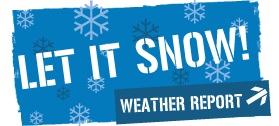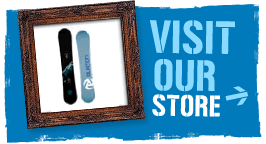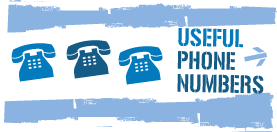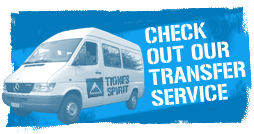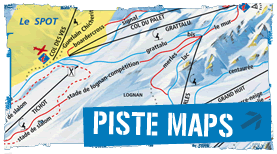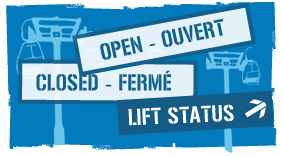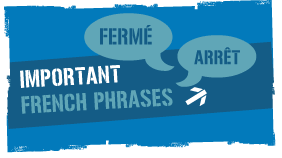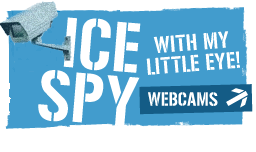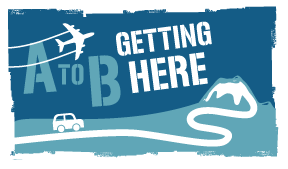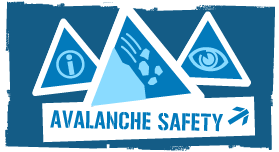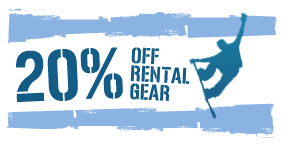Getting more from the mountain and off-piste skiing.
The HATadventures top safety tips
Getting more from the mountain and off-piste skiing.
Getting more from the piste – we think this means having fun, being safe, learning new things and discovering new places. The reason off-piste skiing is so rewarding is there is always a lot to learn. We are sure you will enjoy this voyage of discovery.
HAT (Henry’s Avalanche Talk) is all about learning, having fun and being safe.
HATadventures goes further and helps you find the best snow and gets you out on the mountain. But our mission is to help all people to have fun and be safe. So whether you have come to a Henrys Avalanche Talk or you want to come on a HATadventure or you just choose to receive our newsletter, we are delighted to share what we have learned about the fantastic world of off-piste skiing.
This paper concentrates on being safe. Future ezines from HAT will expand on this and cover having more fun, improving your technique and working out where to go.
The big questions.
There are a number of questions that we all think about when going off-piste. Here are a few people often ask us:
Is it safe to go off-piste just on the side of the piste? Is it safe to go off-piste today? Where is the best snow today? Surely it is OK to follow those tracks?
Invariably the answer is – it depends. You may well then say, it depends on what? We will try to give you a glimpse of what to consider.
This paper cannot suddenly turn anyone into an expert who is safe to go off-piste. It is a short introduction to the subject. But if you got this far you probably already know something or you are keen to learn. Either way we can all benefit from continual reminders about safe conduct and how to enjoy the off-piste. So this is here to help.
Top 3 safety tips.
Never go alone. If anything happens, there is a good chance no-one will discover you. It is not like the pistes. Pistes are busy with people and even when they are quiet, they are patrolled. So if you have an accident, you will be found and can be rescued. In the off-piste, there is no patrol and you might be the only person there. So this is one of the few absolutes in off-piste skiing: never means never.
Know what you don’t know, consider taking a guide. When you think you don’t know if it is safe, you don’t go or hire a guide. As you learn more, you can make judgements about where to go, where the best snow is and the capabilities of your group. But just because you have learned a bit this is not a carte blanche to go offpiste.
Some mountain professionals worry about sharing their advice on the basis that a little knowledge can be dangerous. We agree this is a worry, but we do not think that this means we should not share the knowledge. But when you don’t know, you don’t go or hire a guide.
When you learn more you will know what you don’t know, then your confidence will increase and you can enjoy more about off-piste.
©HATadventures ltd
Have the right kit and know how to use it (probe pole, shovel, transceiver, plus supplies). Being prepared, means that in the event of an accident you increase your chances of survival several times over. Clearly though, just carrying the kit is not enough.
You need to have some training in how to use it. All major resorts in the French Tarentaise, operate beeper training sessions. HAT also runs training in Val d’Isere and Sainte Foy. Obviously if you come with HATadventures we will cover this.
Risk Management – 9 tips
Ask the pisteurs or piste patrol for advice. We know that sometimes they can look a bit scary and like “the authorities”. But their primary job is to make the mountain safe and they will give you clear advice about where to go and where not to go.
Naturally, they will be cautious and warn you that off-piste always carries risks. They will never give an unlimited guarantee it is safe. But if they say it is dangerous and you should not go, they will be right about the dangers. They will also explain why a run is closed and why you should avoid it.
Consulting with the piste patrol is something the experts do as well. You will find top guides like Henry often consult with the pisteurs and take account of their advice.
Think twice about skiing steeper slopes after heavy snow. Stay clear of large deposits of snow or overhangs or any areas where there are steeper slopes above you. The significance of this advice varies according to the avalanche risk as advertised by the safety authorities. But interpreting the level of danger is not straightforward, many accidents happen on low avalanche risk days as people get more confident and less careful.
Look at where the wind blew the snow. The evidence lies in wind stripped slopes in contrast to wind loaded slopes. Cornices will provide clues about this. Unfortunately, the wind loaded slope not only offers the nicest snow, but also carries very high risks. Usually it is wise to avoid them by sticking to the ridges and the wind blown areas.
You can only go on wind loaded areas if you have local and current advice about snow stability and can interpret the risks inherent in the slope angle.
Ski the slope one at a time. When you think about it, this is common sense. One person weighs less than two or three. So by going one at a time you reduce the risk of triggering a slide. This also means you can look out for each other.
©HATadventures ltd
Risk Management – continued
Look for islands of safety -do not linger anywhere that looks exposed, find places for the group to congregate where you will not risk setting off a slab avalanche or be standing underneath a potential slide.
These islands usually exist below rocky outcrops or on small ridges. But you need experience and guidance from experts to learn how to spot them. This picture shows skiers waiting on an island of safety and the group proceeding one at a time.
Chris Souillac
Do not ski slopes that are directly above holes, cliffs, gullies or lakes; if an avalanche is triggered you are greatly increasing your chances of being killed or seriously hurt.
Do not ski directly above other skiers. This is simply bad etiquette as you risk triggering an avalanche on top of them; wait until they are out of sight.
Do not assume that skiing in trees will give you safety; this is not always the case.
Check weather forecast and understand the avalanche risk assessment for that day, look out for avalanche flags, talk to the piste patrol.
©HATadventures ltd
Further information
Books
Off-piste – by Wayne Watson, Wayne is an Alpine Experience guide, who has written this attractive, informal and easy to understand guide to going off-piste.
Val d’Isere Tignes Hors Piste. A small pocket guide to all the well known off piste routes in the area. There are descriptions accompanied by photos marked with the routes.
You can get this from Snow and Rock
Les Cles du Paradiski A large coffee table style book covering all the routes from the Sache to les Arcs to La Plagne and as far as Mont Joly and Notre Dame du Pre. The photography is glorious and you will spend many happy ours in the evening studying routes. We have not yet found a UK source for this. You can buy it in bookshops in the Tarentaise valley
Websites
- HATadventures
- Henrys Avalanche Talk
- Alpine experience where Henry also operates as an off piste guide.
- Times Online David Lister about Avalanche dangers and the HAT UK tour.
HATadventures partners
Sainte Foy website. Premiere Neige webiste.
HATadventures ltd
HATadventures Ski Guiding team
Henry Schniewind and the Henry's Avalanche Talk team deliver the ski guiding and safety training. Henry has the highest French ski instructor qualification and has guided off-piste in the Tarentaise for 15 years. He regularly works in Val d’Isere as a guide for the top off-piste ski school Alpine Experience.
Henry has also become something an avalanche safety expert. Following a close shave with an avalanche when he was 22 years old, Henry decided to take safety more seriously and he returned to the USA to study avalanche forecasting and snow science. Since then, Henry has developed the Henrys Avalanche Talk (HAT) programme which delivers avalanche safety talks and beeper training in Val d’Isere, Ste Foy, Tignes, Meribel and Val Thorens.
The HAT programme is now widely recognised as the definitive avalanche safety information programme for English speaking skiers in the French Tarentaise Alps. Henry’s advice was profiled as from “Mr Avalanche” in the Times on 4th October 2006 in a piece on the HAT UK tour during October and November 2006.
HATadventures business team
Chris Radford (a marketing entrepreneur) delivers the marketing and supports the programme. Chris has been one of Henry’s regular customers, and has skied for over 60 weeks including 20 weeks guided off-piste; most of it in the Tarentaise. Chris does the website and marketing plus advises Henry on what it is like to be a normal skier and customer. Chris works to make sure the customer experience is everything you could hope for.
Stacey Clark (the business mind and entrepreneur) keeps the business on the rails and also provides on the ground support delivering the programme. Stacey has skied regularly over 20 years and been groomed by Henrys guiding, the avalanche talks and beeper training. Stacey stimulates new ideas and ensures that everything works properly.


